Artillery in Canada (4) Manitoba: CFB Shilo, Royal Regiment of Canadian Artillery Museum (2)

(York Sunbury Historical Society, Fredericton Region Museum Collection, Author Photo)
1997.28.42. RCA badge, QC.
CFB Shilo, Royal Regiment of Canadian Artillery Museum


(Clive Prothero-Brooks Photos)
Canadian Military Pattern (CMP) Ford Gun Tractor (FGT).

(Library and Archives Canada Photo, MIKAN No. 3581657)
Canadian Military Pattern Field Artillery Tractor “Quad” 4x4 (CMP FAT), RCAF Station Ottawa, Ontario, c1940.

(Library and Archives Canada Photo, MIKAN No. 3581658)
Canadian Military Pattern Field Artillery Tractor “Quad” 4x4 (CMP FAT), RCAF Station Ottawa, Ontario, c1940.

(Library and Archives Canada Photo, MIKAN No. 3260954)
Forward Observation Post of "B" Battery, 1st Field Regiment, Royal Canadian Artillery, 24 Sep 1943, near Potenza, Italy.

(Library and Archives Canada Photo, MIKAN No. 3225419)
Captains S.A. Mooney and I.C. Stewart, Forward Observation Officers attached to the 6th Airborne Division, British Army, Greven, Germany, 5 April 1945.

(Clive Prothero-Brooks Photo)
Sexton 25-pounder C Mk. 1 Self-propelled Gun (Reg. No. CS172740), part of the Dr. William Gregg Collection donated to the RCA Museum.

(Library and Archives Canada Photo, MIKAN No. 3396109)
American 105-mm M7 Priest Self-propelled Howitzer, 19th Fd Regt, RCA, France, July 1944.

(Library and Archives Canada Photo, MIKAN No. 3607614)
Troop of 105-mm Priest self-propelled howitzers of the Royal Canadian Artillery (RCA) in Italy, c1943.

(Library and Archives Canada Photo, MIKAN No. 3396095)
American 105-mm M7 Priest Self-propelled Howitzer, LBdr W.J. Pelrine, 14th Field Regt, RCA, France, 20 June 1944.

(Library and Archives Canada Photo, MIKAN No. 3396099)
American 105-mm M7 Priest Self-propelled Howitzer, 34th Bty, 14th Fd Regt, RCA, France, 20 June 1944.

(Library and Archives Canada Photo, MIKAN No. 3396110)
American 105-mm M7 Priest Self-propelled Howitzer, 19th Fd Regt, RCA, France, July 1944.

(Library and Archives Canada Photo, MIKAN No. 3231470)
American 105-mm M7 Priest Self-propelled Howitzer, BSM W.H. Galloway and Captain Stirling, 19th Field Regt, RCA, Normandy, France, 22 June 1944.


(Clive Prothero-Brooks Photos)
American 105-mm M7 Priest Self-propelled Howitzer, “Zulu Warrior”.

(Clive Prothero-Brooks Photo)




(Maxwell J. Toms and Terry Honour Photos)
95-mm Infantry Howitzer.

(Library and Archives Canada Photo, MIKAN No. 2266434)
5.5-inch BL Mk. III Gun on a Mk. I Carriage, Canada 43-cent stamp.

(Library and Archives Canada Photo, MIKAN No. 3209132)
QF 4.5-inch Mk. II Howitzer on a Mk. I Carriage, Canadian Gunners, 2nd Medium Regiment, RCA, Netherlands, 2 Apr 1945. Apart from the barrel, this gun was identical to the 5.5-inch BL Mk. III Howitzer.

(Library and Archives Canada Photo, MIKAN No. 3625452)
5.5-inch BL Mk. III Gun on a Mk. I Carriage, National Railways Munitions plant, 1943.

(Library and Archives Canada Photo, MIKAN No. 3208405)=
5.5-inch BL Mk. III Medium Gun on a Mk. I Carriage, RCA, Otterloo, Netherlands, 5 May 1945.


(Clive Prothero-Brooks Photos)
5.5-inch BL Mk. III Meium Gun on a Mk. I Carriage (Serial No. 853), WO & Sgts Mess.

(Maxwell J. Toms Photo)



(Clive Prothero Brooks Photo)
5.5-inch BL Mk. III Meium Gun on a Mk. I Carriage (Serial No. 859). Canada made carriages for these guns during the Second World War, and after the war acquired 85 of them for the RCA. The gun fired a 45.5-kg (100-pound) shell to a range of 14,800 metres (16,200 yards).


(Clive Prothero-Brooks Photos)
American 155-mm M2 Gun "Long Tom" on Mk. I Carriage. Two batteries of the 59th (Newfoundland) Heavy regiment used these guns during the campaign in Northwest Europe. Canada purchased 20 of them post-war, but only two were actually used, the rest were put in storage.


(Clive Prothero-Brooks Photos)
155-mm C1 (M1A2) Medium Howitzer on M1A2 Carriage, aka M114, manufactured at Sorel Industries Limited in Quebec, Queen Elizabeth II cypher. CFR 34402, Reg. No. 174. The carriage plate reads: CARR HOW 155mm M1A2 CDN, SOREL INDUSTRIES LTD, CANADA (1956), REG. NO. CDN 174, INSP (Maple Leaf).

(Clive Prothero-Brooks Photo)
155-mm C1 (M1A2) Medium Howitzer on M1A2 Carriage, aka M114, manufactured at Sorel Industries Limited in Quebec, Queen Elizabeth II cypher. CFR 34402. The carriage plate reads: CARR. HOW. 155MM M1A2 CDN. SOREL INDUSTRIES LTD. CANADA (year TBC), REG. NO. CDN 152, INSP (Symbol).



(Clive Prothero-Brooks Photos)
155-mm C1 (M1A2) Medium Howitzer on M1A2 Carriage, aka M114, manufactured at Sorel Industries Limited in Quebec, Queen Elizabeth II cypher. Reg. No. CDN 1. The carriage plate reads: CARR HOW 155mm M1A2 CDN, SOREL INDUSTRIES LTD, CANADA (1952), REG. NO. CDN 1, INSP (symbol). 1 RCHA.

(Maxwell J. Toms Photo)

(Terry Honour Photo)
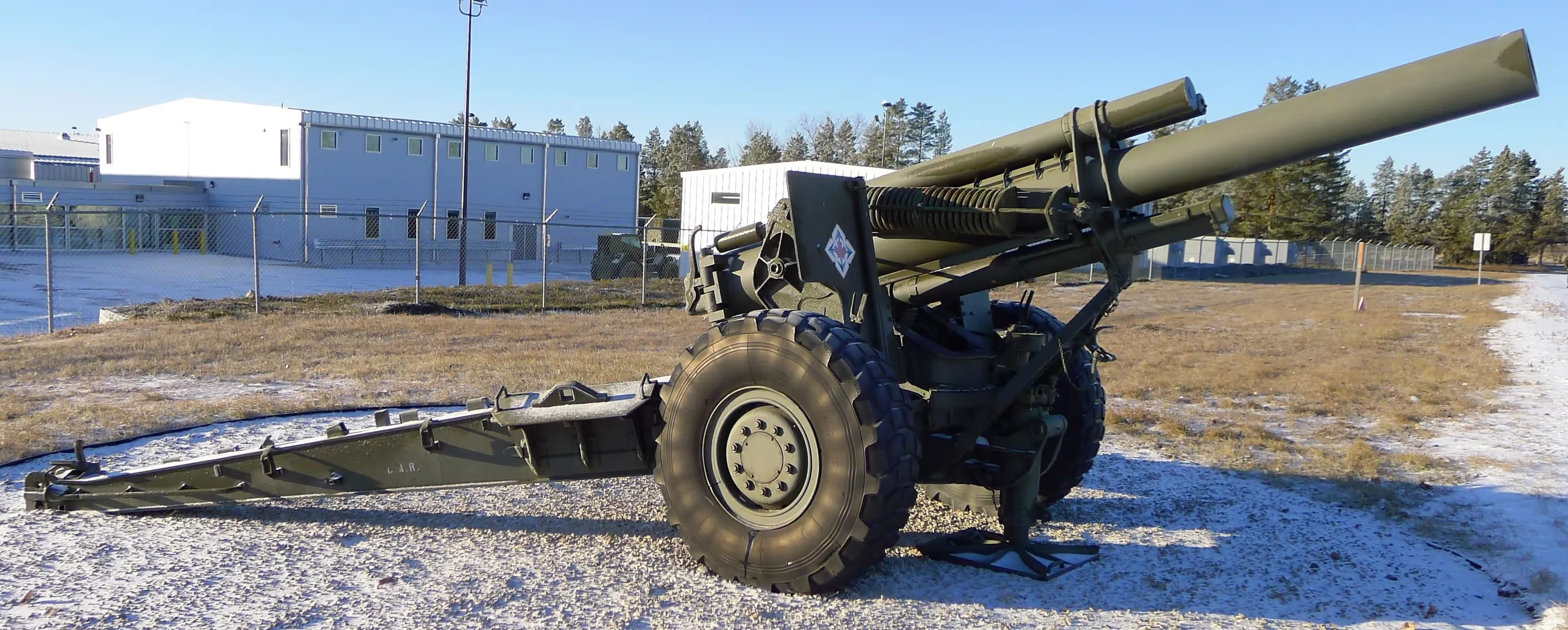

(Clive Prothero-Brooks Photo)
155-mm C1 (M1A2) Medium Howitzer on M1A2 Carriage, aka M114, manufactured at Sorel Industries Limited in Quebec, Queen Elizabeth II cypher. Reg. No. 9. The carriage plate reads: CARR HOW 155mm M1A2 CDN, SOREL INDUSTRIES LTD, CANADA (year TBC), REG. NO. CDN 9, INSP (Symbol). 1 RCHA.



(Author Photos)


(Terry W. Honour Photos)

(Clive Prothero-Brooks Photo)
155-mm C1 (M1A2) Medium Howitzer, M114/39. This Gun was manufactured at Sorel Industries Limited in Québec), modified with an American M185 39-calibre barrel (Serial No. 1141) by RDM Technologies in the Netherlands to M114/39 configuration. RDM developed a conversion kit which enabled the US 155 mm M114 towed howitzer to fire new extended range ammunition. The company reputedly converted two Canadian 155-mm Howitzers to the M114/39 configuration and completed trials with them in Canada, however Canada did not proceed with an upgrade to the M114/39 standard. CFR 34441. The carriage plate reads CARR. HOW. 155MM M1A2 CDN. SOREL INDUSTRIES LTD. CANADA (year TBC), REG. NO. CDN 27, INSP (Symbol).

(Terry W. Honour Photo)
American 105-mm M2A1 Howitzer, identifiable by being built with an early bolt together US style rims. This gun was recovered from an American range in Germany. It was brought back from Germany by 1RCHA when it moved back to Shilo in the mid 1990s. The gun was missing several original parts, including the breech ring, and was restored in 1998. During the restoration, Rob Love replaced the tires and completely repainted the gun. Weapons Sergeant Dave Smith contacted the LCMM which led to the acquisition of the Canadian breech and breeching ring, NO. CDN 122, 1956, shown in the photo, as the original items had been removed by the Americans. The LCMM had a set that had reached their maximum EFCs and therefore it was on the loading dock in Montreal waiting to go for smelting. It was sent to the restoration team at Shilo and installed on the M2A1. When examining the gun, a knowledgeable gunner will note that there is no swelling on the end of the barrel nor is it set back from the rifling, which leads to the confusion when it comes to recognition and mis-identification when the observer goes by the breech ring data. The restorers installed a uniquely Canadian spare sight box on the front shield which has the little hump on it for the C1 panoramic telescope. (Thanks to Rob Love for the update)

(Clive Prothero-Brooks Photo)

(Maxwell J. Toms Photo)
155-mm M109 Self-Propelled Howitzer, (CFR No. 85-34817), AC: MD, ECC: 119205 HUI C: 0118, SAUI C: 0118, VMO No. DLE21739, VMO Date: 14 Jul 2005. Display Monument at the front gate.

(Maxwell Toms Photo)

(Clive Prothero-Brooks Photo)
155-mm M109 Self-Propelled Howitzer, (Reg. No. 85-77245), 1985, AC: MD, ECC: 119205 HUI C: 0118, SAUI C: 0118, VMO No. DLE21739, VMO Date: 14 Jul 2005. Display Monument.

(Clive Prothero-Brooks Photo)




(Maxwell J. Toms Photos)
155-mm M109 Self-Propelled Howitzer, (Reg. No. 34838), 1968, AC: MD, ECC: 119205 HUI C: 0118, SAUI C: 0118, VMO No. DLE21739, VMO Date: 14 Jul 2005. Inside the Museum.

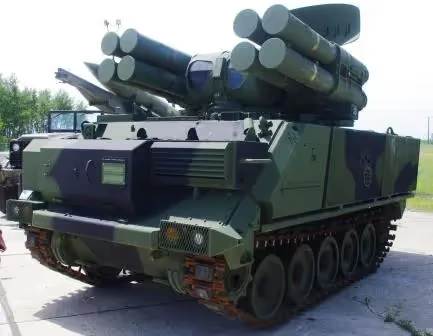

(Maxwell J. Toms Photo)
ADATs. The Air Defense Anti-Tank System (ADATS) is a dual-purpose short range surface-to-air and anti-tank missile system based on the M113A2 vehicle. It is manufactured by the Swiss company Oerlikon-Contraves, a member of the Rheinmetall Defence Group of Germany. The ADATS missile is a laser-guided supersonic missile with a range of 10 kilometres, with an electro-optical sensor with TV and Forward Looking Infrared (FLIR). The carrying vehicle has also a conventional two-dimensional radar with an effective range of over 25 kilometres.

(Clive Prothero-Brooks Photo)
MGN-5 Corporal Missile.

(Clive Prothero-Brooks Photo)
MIM-3 Nike Ajax Missile.

(Clive Prothero-Brooks Photo)
MIM-14 Nike Hercules Missile.

(Library and Archives Canada Photo, MIKAN No. 4235904)
SSII Rocket mounted on a 3/4-ton truck, ca 1960s.








(Library and Archives Canada Photos, MIKAN Nos. 4235073-4235080)
762-mm M31/M50 Honest John Rocket team with M33 launcher trailer set-up and in operation.

(Clive Prothero-Brooks Photo)
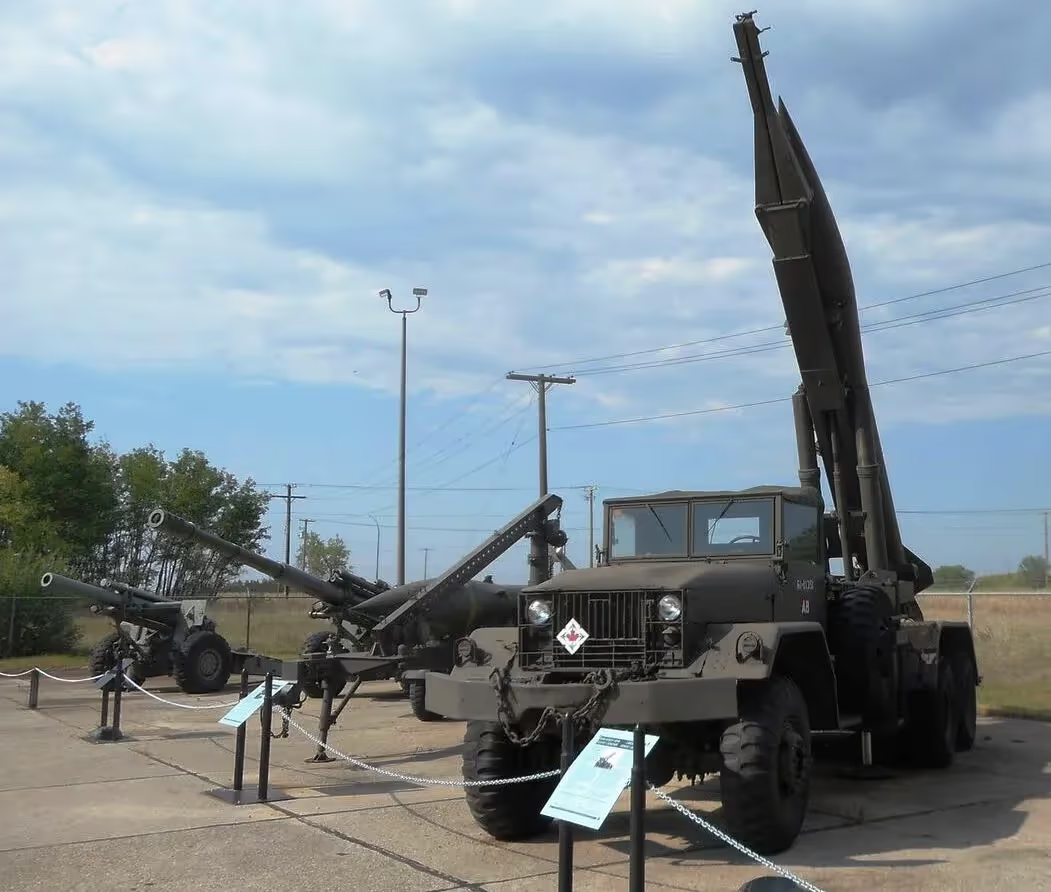


(Terry Honour Photos)
762-mm M50 Honest John Rocket with M33 launcher trailer.
LAV III memorial replica.
Foreign Equipment and Artillery




(Terry Honour Photos)
British 105-mm FV433 Abbot Self-Propelled Gun.


(Clive Prothero-Brooks Photos)
French 75-mm M1897 Field Gun (Canon de 75-mm modèle 1897), No. 2512, Puteaux, 1917.


(Clive Prothero-Brooks Photos)
French 75-mm M1897 Field Gun (Canon de 75-mm modèle 1897), No. 3378, Bourges 1918.

(Clive Prothero-Brooks Photo)
French 105-mm M1913 Schneider Field Gun (Canon de 105 mle 1913).

(Clive Prothero-Brooks Photo)

(Maxwell J. Toms Photo)
French 105-mm M1936 Schneider Field Gun (Canon de 105 L modèle 1936).



(Clive Prothero-Brooks Photos)
Russian 122-mm M1938 (M30) Howitzer.

(Chipman family Photo)
MWO Jim Chipman with the same gun in Egypt, ca. 1970.

(Maxwell J. Toms Photo)



(Clive Prothero-Brooks Photos)
Russian 14.5-mm ZPU-4 Anti-Aircraft Gun.



(Clive Prothero-Brooks Photos)



(Maxwell J. Toms Photo)
Russian 152-mm 2S3 Akatsiya M1973 SP Gun.





(Clive Prothero-Brooks Photos)
Czech RM-70 Multiple Rocket Launcher.


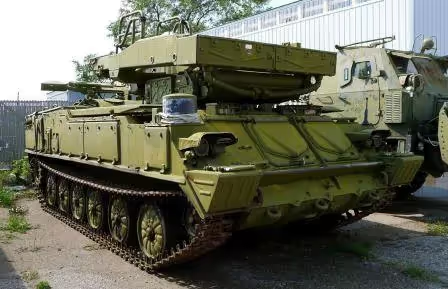


(Clive Prothero-Brooks Photos)
Russian/Czech 2P25 SA-6 Gainful Transporter Erector Launcher (TEL).

(Maxwell J. Toms Photo)
Yugoslav M-55A Triple 20mm Anti-Aircraft Gun, No. 1 of 3.

(Maxwell J. Toms Photo)
Yugoslav M-55A Triple 20mm Anti-Aircraft Gun, No. 2 of 3.

(Maxwell J. Toms Photo)
Yugoslav M-55A Triple 20mm Anti-Aircraft Gun, No. 3 of 3
German Artillery and Machine Guns in the RCA Museum from the First World War

(Library and Archives Canada Photo, MIKAN No. 3397945)
German Artillery, trench mortars and machine guns captured by Canadians, East of Arras, France, Sep 1918.

(Library and Archives Canada Photo, MIKAN No. 3213520)
German MG 08s being examined by LGen Julian Byng, May 1917.
German First World War 7.92-mm Maxim Spandau MG08 Machinegun (Serial Nr. 1133), captured by the RCR, 3rd Canadian Division on 26 August 1918 at Faction Trench N.E. of Monchy-le-Preux, France. Originally allocated to the town of Binscarth, Manitoba.
German First World War 7.92-mm Maxim Spandau MG08 Machinegun (Serial Nr. 1870), captured by the 27th Battalion, late 1918. Also originally allocated to the town of Binscarth, Manitoba.
German First World War 7.92-mm Maxim Spandau MG08 Machinegun (Serial Nr. 4882), no data, originally allocated to Lockport, West Selkirk, Manitoba.
German First World War 7.92-mm Maxim Spandau MG08 Machinegun (Serial Nr. 4900), captured by the 20th Battalion on 5 August 1917 at the Cité St Emile, N. of Lens, France. Originally allocated to Brandon College, Brandon, Manitoba.
German First World War 7.92-mm Maxim Spandau MG08 Machinegun (Serial Nr. 7109), no data, originally allocated to Lockport, West Selkirk, Manitoba.
German First World War 7.92-mm Maxim Spandau MG08 Machinegun (Serial Nr. 40553), captured by the 3rd Canadian Division in October 1918 in the vicinity of Cambrai, France. Originally allocated to Carman, Manitoba.

(Library and Archives Canada Photo, MIKAN No. 3521829)
German 7.68-cm trench mortars captured by Canadians, Apr 1917.


German First World War 7.58-cm leichtes Minenwerfer neuer Art, (7.58-cm leMW), (Serial Nr. 32258), no data, on heavy metal base with ramp, handle intact, painted dark grey, mounted on a wheeled carriage. New wheels and trail in 1988, weight in action 550 lbs. Sent to CFB Shilo from the CME Museum, CFB Gagetown, New Brunswick in January 2013. Originally allocated to Maillardville, Fraser Mills, British Columbia.

(Library and Archives Canada Photo, MIKAN No. 3521845)
German 17-cm trench mortars captured by Canadians, Apr 1917.


(Maxwell J. Toms Photos)
German First World War 17-cm mittlerer Minenwerfer (17-cm mMW), (Serial Nr. TBC). Medium trench mortar mounted on an iron baseplate, no wheels.


(Clive Prothero-Brooks Photos)
German First World War 24-cm Flügelminenwerfer ‘Iko’, Albrecht (finned smoothbore Trench Mortar), (Serial Nr. 339), no data. This mortar was originally allocated to Lockport, West Selkirk, Manitoba.
In 1914 The German Army had three types of minenwerfer (mine throwers) used by their engineers to place a demolition charge against a fortification without exposing the men to enemy fire. At that time, the British army did not have trench mortars, but quickly understood their value and began to develop an equivalent. In mid-1915 the 3-inch Stokes mortar was accepted for service in the infantry. The artillery operated a 2-inch medium "toffee apple" mortar and 9.45-inch heavy mortars. The 2-inch mortar was replaced with the 6-inch Newton mortar in 1917.

3-inch Stokes mortar. (Wikimedia Photo)

3-inch Stokes mortar. (Wikimedia Photo)

(Library and Archives Canada Photo, PA-004921).
'Z.C. Trench Mortar Battery' France 'Suicide Club' after the Battle of Lens, Lieutenants. J.A. McGibbon and B.E. Scott, M.C. with a Canadian trench mortar battery equipped with a 2-inch Muzzleloading Trench Howitzer (The "Toffee Apple" Mortar). The designation "2-inch" refers to the mortar barrel, into which only the 22-inch bomb shaft but not the bomb itself was inserted; the spherical bomb itself was actually 9 inches (230-mm) in diameter and weighed 42 lb (19 kg), hence this weapon is more comparable to a standard mortar of approximately 5-6 inch bore.

(Library and Archives Canada Photo, PA-003380)
6-inch Newton Trench Mortar being fired by Canadian troops at Valenciennes, France, 1918.

(Library and Archives Canada Photo, MIKAN No. 3404552)
9.45-inch Trench Mortar being made ready for firing. The Canadian gunner is checking the setting of the No. 31 time fuze at the 1st Army School, Clarques, Feb 1917. The mortar round is being fired in the photo on the right.

(Library and Archives Canada Photo, MIKAN No. 3521982)
9.45-inch Trench Mortar being fired.

(Library and Archives Canada Photo, MIKAN No. 3397896)
German 7.7-cm FK 96 Field Gun captured by Canadians, Amiens, Aug 1918.

(Clive Prothero-Brooks Photo)
German Great War 7.7-cm Feldkanone 96 neuer Art (7.7-cm FK 96 n.A.), Field Gun, (Serial Nr. 3316), no data, originally allocated to Gleichen, Alberta.
The 7.7 cm Feldkanone 96 neuer Art (7.7 cm FK 96 n.A.) is a German field gun. The gun combined the barrel of the earlier 7.7 cm FK 96 with a recoil system, a new breech and a new carriage. Existing FK 96s were upgraded over time. The FK 96 n.A. was shorter-ranged, but lighter than the French Canon de 75 modèle 1897 or the British Ordnance QF 18 pounder gun; the Germans placed a premium on mobility, which served them well during the early stages of World War I. However, once the front had become static, the greater rate of fire of the French gun and the heavier shells fired by the British gun put the Germans at a disadvantage. The Germans remedied this by developing the longer-ranged, but heavier 7.7 cm FK 16. As with most guns of its era, the FK 96 n.A. had seats for two crewmen mounted on its splinter shield.
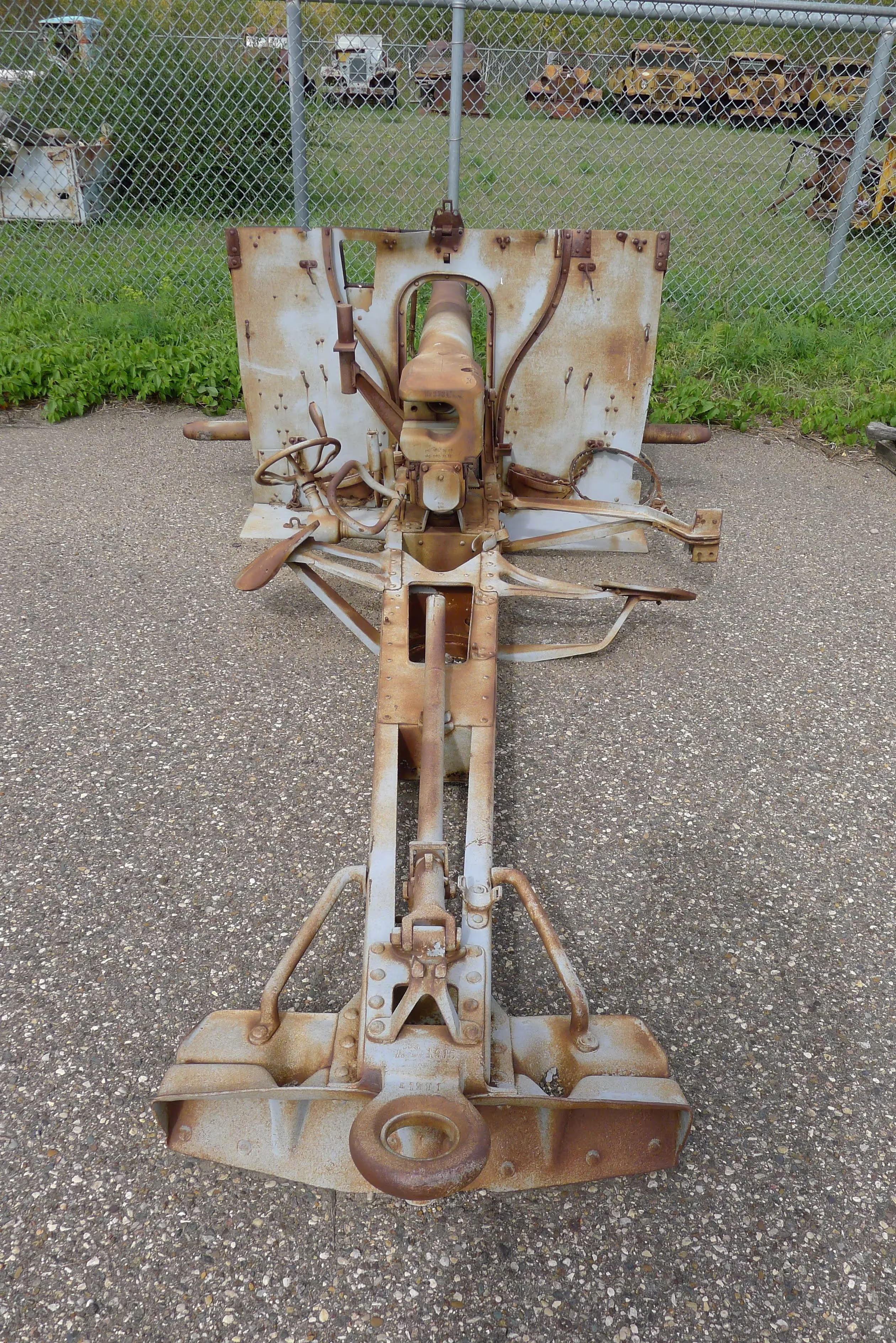


(Clive Prothero-Brooks Photos)
German Great War 7.7-cm Feldkanone 96 neuer Art (7.7-cm FK 96 n.A.), Field Gun, (Serial Nr. 3734), no data, originally allocated to Rockwood, Ontario.
German Artillery in the RCA Museum from the Second World War

A British soldier examines a captured German 2.8-cm sPzB 41 anti-tank gun, Sicily, 21 July 1943. (IWM Photo NA 4961)


(WO C.H. Kendall Photos)
German Second World War 2.8-cm schwere Panzerbüchse 41 Anti-Tank Gun (2.8-cm sPzB 41) Anti-Tank Gun (Serial Nr. 2556). The barrel has a separate number, (Serial Nr. 52536). The sPzB 41 light AT Gun worked on the squeeze-bore principle. This gun is currently on loan to the Base Museum, CFB Petawawa, Ontario.

German Second World War 3.7-mm PaK 36(t) Anti-Tank Gun in service in Northern France, summer 1944. (Bundesarchiv Bild 101I-299-1831-26)
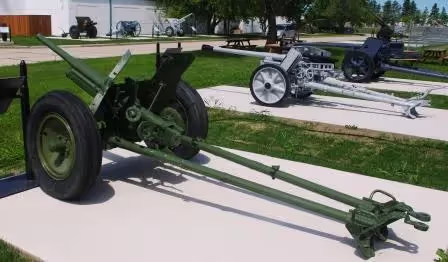
(Maxwell J. Toms Photo)




(Clive Prothero-Brooks Photos)
German Second World War 3.7-mm Czech Škoda PaK 36(t) Anti-Tank Gun. (Russian M1937), AKC SPOL, 93 kg, d?. Škodovy Závody v Plzni, tov ?ís. 21532, E1 37, 3.7 cm k vz.37, ?ís. 7, VL0217! (53-K), Serial No. 5795.
The 3,7cm ÚV vz. 38 (Czech: úto?ná vozba), manufacturer's designation Škoda A7, was a 3.7-cm tank gun designed by the Skoda Works in Czechoslovakia before the Second World War began. The gun was the primary armament of the Czech LT vz. 38 light tank, known in German service as the Panzer 38(t). The primary user of the A7 was the Wehrmacht during the Second World War where the weapon went by the name 3,7cm Kampfwagenkanone 38(t). In German service, in addition to conventional high explosive ammunition, the weapon fired two anti-tank rounds. The primary round was the Panzergranate 39 armor-piercing composite ballistic cap (APCBC) which could penetrate 41-mm of armour plate at 100-m and 35-mm at 500-m. Penetration dropped to 29-mm at 1000-m and 24-mm at 1500-m. The APCBC round was ineffective at 2000 m. The rarer tungsten Panzergranate 40 armour-piercing composite rigid (APCR) round could penetrate 64-mm at 100-m, but only 34-mm at 500-m. The APCR round was not effective at 1000-m or beyond.

German SS gunners man a 7.5-cm leichtes Infanteriegeschütz 18 Light Infantry Gun (7.5-cm leIG 18) during the Battle of Uman, Cherkasy Oblast, Ukraine, Soviet Union. 18 August 1941. (German Wehrmacht Photo)


(Clive Prothero-Brooks Photos)
German Second World War 7.5-cm leichtes Infanteriegeschütz 18 Light Infantry Gun (7.5-cm leIG 18) (Serial Nr. R191).

German soldiers prepare a 55-cm PaK 38 (L/60) Anti-Tank Gun for action in the outskirts of Stalingrad. Near Stalingrad (now, Volgograd), Volgograd Oblast, Russia, Soviet Union. September 1942. (Wehrmacht Photo)


(Clive Prothero-Brooks Photo)
German Second World War 5-cm PaK 38 (L/60) Anti-Tank Gun (Serial Nr. R4024), shipped to Canada from the UK on 24 Oct 1944.


(Clive Prothero-Brooks Photos)
German Second World War 5-cm PaK 38 (L/60) Anti-Tank Gun (Serial Nr. R10087). 1 RCHA.

German Second World War 5-cm PaK 38 (L/60) Anti-Tank Gun in action, ca 1943. (Wehrmacht Photo)

(Tighe McManus Photo)
5-cm PaK 38 (L/60) Anti-Tank Gun (Serial Nr. R5709), on loan to the Antler River Museum, Manitoba.

(Library & Archives Canada Photo, MIKAN No. 3208583)
Canadian soldiers examining a captured 7.5-cm PaK 40 Anti-Tank Gun marked with 15 kill rings, ca. 1945.

7.5-cm PaK 40 Anti-Tank Gun, Italy. (Willi Ude Photo, Wikipedia)




(Clive Prothero-Brooks Photo)
7.5-cm PaK 40 Anti-Tank Gun (Serial Nr. R807).




(Clive Prothero-Brooks Photos)
10.5-cm leichtes Feldhaubitze 16 (10.5-cm leFH 16), (Serial Nr. R341).

(Library and Archives Canada Photo, MIKAN No. 4233165)
German artillery examined by Canadians in France, ca. June 1944.


(Clive Prothero-Brooks Photos)
10.5-cm leichtes Feldhaubitze 18/40 (10.5-cm leFH 18/40) Howitzer (Serial Nr. R158). (Captain F.M. Mowat).

(Clive Prothero-Brooks Photo)
10.5-cm leichtes Feldhaubitze 18/40 (10.5-cm leFH 18/40) Howitzer (Serial Nr. R284).








(Clive Prothero-Brooks Photos)



(Maxwell J. Toms Photos)
15-cm schwere Feldhaubitze 18 (15-cm sFH 18) (Serial Nr. R856). Brought to Canada in 1945 by Captain Farley M. Mowat.

(wing.and.a.prayer Photo)



(Clive Prothero-Brooks Photos)
17-cm Kanone 18 (17-cm K 18) in Mörserlafette Field Gun, (Serial Nr. 58). Brought to Canada in 1945 by Captain Farley M. Mowat.


(Clive Prothero-Brooks Photo)
30-cm Raketenwerfer 56, (no Serial Number visible).



(Clive Prothero-Brooks Photos)

(Maxwell J. Toms Photo)
10.5-cm Leichtgeschütz 42 (10.5-cm LG 42 Recoilless Gun, (Serial Nr. R121). Brought to Canada in 1945 by Captain Farley M. Mowat.


(Clive Prothero-Brooks Photos)
German Jagdpanzer Kanone 90-mm Tank Destroyer, outside the Range Control Building.


(Author Photos)
Japanese 70-mm Type 92 Howitzer, (Serial No. 2561), currently on loan to the NBMHM, CFB Gagetown, New Brunswick.
RCA Museum Aircraft

(Author Photo)
Cessna L-19 Bird Dog (Serial No. 16706), shown here at CFB Petawawa, Ontario, ca 1977.






(Clive Prothero-Brooks Photos)
Auster AOP Mk. V (Serial No. TJ398). Recently acquired for the RCAM and flown to the museum in an RCAF Lockheed CC-130 Hercules transport from the UK. It is painted to represent a Canadian Army artillery spotting aircraft operating in Italy during the Second World War.
No. 651 to No. 663 Squadrons of the RAF were Air Observation Post units working closely with army units in artillery spotting and liaison. Three additional squadrons were Canadian, and approved on the RCAF list in the late summer of 1944: No. 664 Squadron RCAF, No. 665 Squadron RCAF, and No. 666 Squadron RCAF. The Canadian pilots were officers recruited from the Royal Canadian Artillery and trained to fly at No. 22 Elementary Flying Training School, RAF Cambridge, and further trained for operational flying at No. 43 Operational Training Unit RAF, at RAF Andover.
The squadron was formed at RAF Andover, England, on 5 Mar1945, the third Air Observation Post squadron consisting of Canadian personnel to be formed at RAF Andover, after a 1944 parliamentary debate in Ottawa, Ontario, resulted in the approval of three AOP squadrons to be added to the RCAF list, in support of the First Canadian Army. The squadron operated under the overall command of No. 70 Group, RAF Fighter Command.
RCA Major Dave Ely initially took command of each of the three squadrons, and was assisted by two RCAF Flight Lieutenants, D. Dougall (Acting Squadron Adjutant) and A.R. Woodhouse (Squadron Equipment officer). Major Ely was also assisted by nine AOP trained Royal Artillery Officers, who began training the squadron's other ranks.
In the last week of March 1945, 666 Squadron's aircraft – sixteen Auster Mk. Vs – began to arrive, along with the squadron's ground transport. On 7 May 1945, ten qualified Canadian AOP pilots were posted to the squadron, and from their ranks, Captain A.B. Stewart was elevated to Squadron Captain. In April, No. 666 Squadron began a succession of moves: on 17 April, to Alfriston Aerodrome; on 28 May, to Gilze-Rijen, the Netherlands, on 6 June, to be headquartered at Hilversum, from where the squadron's three subordinate Flights were dispersed to Dordrecht, Alkmaar, and Ede.
On 12 June, Major Ely left No. 666 Squadron after being reassigned to Canadian Far East Force (CFEF), and was replaced by Major A.B. Stewart as Officer Commanding. Through the summer of 1945, the squadron was tasked with 'air taxi' duties in support of 1st Canadian Infantry Division, 3rd Canadian Infantry Division, and No. 1 Canadian Army Groups Royal Artillery (AGR). On 25 Jun, No. 666 Squadron moved from Hilversum to Apeldoorn, the Netherlands, joining No. 664 Squadron and No. 665 Squadron in that location, then under the overall command of the First Canadian Army.
With the disbanding of No. 665 (AOP) Squadron, on 10 Jul 1945, many of the remaining personnel from that squadron were transferred to No. 666 Squadron. Tasking thereafter included VIP, Courier, and Communications Flight duties in support of the Canadian Army Occupation Force (CAOF). No. 666 Squadron RCAF in its turn was disbanded at Apeldoorn, the Netherlands, on 31 Oct 1945. The squadron had no motto or heraldic badge assigned to it. (Fromow, Lt-Col. D.L. Canada's Flying Gunners: A History of the Air Observation Post of the Royal Regiment of Canadian Artillery. Ottawa, Ontario, Canada: Air Observation Post Pilots Association, 2002; and, Knight, Darrell. Artillery Flyers at War: A History of the 664, 665, and 666 ‘Air Observation Post’ Squadrons of the Royal Canadian Air Force. Bennington, Vermont, USA: Merriam Press, 2010; and Samuel Kostenuk and John Griffin, RCAF Squadron Histories and Aircraft 1924-1968, Samuel Stevens Hakkert & Company, Toronto & Sarasota, 1977, p. 143)

(Library and Archives Canada Photo, MIKAN No. 3524504)
Briefing of air observation pilots operating in support of regiments of the Royal Canadian Artillery. (Left to right): Capts. Pat Henderson, N.H. Chase, Maj. Ted Mcnaughton. Castel Frentano, Italy, 10 Feb 1944.

(Library and Archives Canada Photo MIKAN No. 3524505)
Briefing of air observation pilots operating in support of regiments of the Royal Canadian Artillery. (Left to right): Capts. Pat Henderson, N.H. Chase, Maj. Ted Mcnaughton. Castel Frentano, Italy, 10 Feb 1944.
The Flewin Field Cairn, CFB Shilo Artillery Park. The Flewin Field Cairn in the CFB Shilo Artillery Park was dedicated on 5 June 1970 by the Officers and Men of CFB Shilo to the memory of Captain G.I. Ross Flewin, CD, RCA, who served at Shilo as an AOP pilot with 2 AOP Flight in 1956 and as an Instructor Gunnery with RCSA in 1959. On 17 January 1964 Captain Ross Flewin was killed while piloting a light aircraft on a routine training flight.


I would imagine that many of you who are reading this book are very likely familiar with the standard routine of military training exercises and the rigours of being in the field in all seasons, not to mention the conditions found on deployment these days. Whether or not you have experienced it, I am sure you can well imagine what it is like to train and work in the heat, the dust and the mosquitoes in summer, the wind, the rain and the mud in the spring and fall, the snow and the cold in the winter and of course the routine day-to-day challenges of combat exercises in the training areas of the Canadian Forces. For most in the Army, this includes CFB Gagetown, CFB Valcartier, CFB Petawawa, CFB Kingston, CFB Shilo, CFB Edmonton, CFB Wainwright, CFB Suffield and all the fields and exercise areas of LFAATC Aldershot and LFCATC Meaford and their environs.
As an Army Officer in the Canadian Forces, it has been my privilege to have served alongside a tremendous number of highly professional military men and women of our nation while taking part in training in Germany, the UK and the USA and while on operational deployments to Cyprus, Bosnia-Herzegovina and in Afghanistan. During my training and military professional development, I have learned much about our long military history. My interest in our multi-faceted historical record has led me to write about it and to seek out the stories about Canada's military servicemen and women and the tools and equipment they used to preserve our security when warclouds darkened our horizons.
As a military history enthusiast, I have learned over the years that there are many with similar interests in preserving our story. We have all seen the odd old gun or retired tank placed on display outside a Militia Drill Hall, War Memorial, city park site or Royal Canadian Legion Hall, and many will have enjoyed visiting a number of our military Museums. The vast majority of retired wartime combat equipment used by members of the CF have dwindled in number, many being scrapped, others being shot up as targets, while a few have been sold to overseas operators and collectors. Fortunately, a handful of important examples of retired CF guns and war machines have been preserved and may be found in a wide variety of locations throughout Canada.
Curators, docents and volunteers working in Canada's military museums have been successful in preserving a good number of retired military weapons of war and many are still being sought after and in some cases, being restored to running condition again. As an artist, photographer and military history enthusiast, I have attempted to keep track of where historic Canadian military equipment has survived and is presently located and to make that information available to others with the same interest. For those of like mind, the purpose of this handbook is to provide a simple checklist of the classic Great War and WWII artillery that is part of our military heritage and a location guide to where they can be found in Canada. The book includes a number of photographs to illustrate an example of each gun wherever possible, and lists the locations of the survivors by province.
The numbers of restored Canadian guns is actually increasing as a few rare examples are being recovered from scrapyards and monument sites and salvaged for restoration. (Ultra rare items such as Skink AA gun turrets come to mind). One of the aims of this book is to help an enthusiast track down these monuments and museum artefacts and to have a simple reference book on hand with more detailed information about them such as a serial number, a Museum location and contact information which might be helpful in learning a bit of the history of a particular vehicle. The guns detailed in this handbook are listed alphabetically by manufacturer, number and type in the order that they came into service with the CF. The data is also appended with a list of most of the current guns found in the various collections and Museums in Canada. The book is also meant to serve as a companion volume to "Ironsides", Canadian Tanks and Armoured Fighting Vehicle Museums and Monuments, also available online.
It is my sincere hope that more of the guns and artillery found in this list will one day be added to the record of historically important military armament survivors that have been recovered and restored.
Shelldrake can be ordered online in softcover or e-book at these bookstores:
http://bookstore.iuniverse.com/Products/SKU-000542288/Shelldrake.aspx
Photos and technical data on artillery preserved in Canada may be viewed by Province on separate pages on this website.





